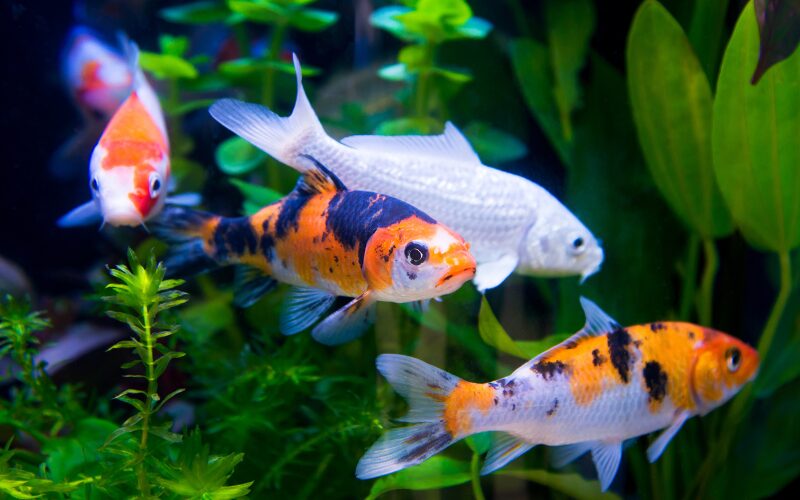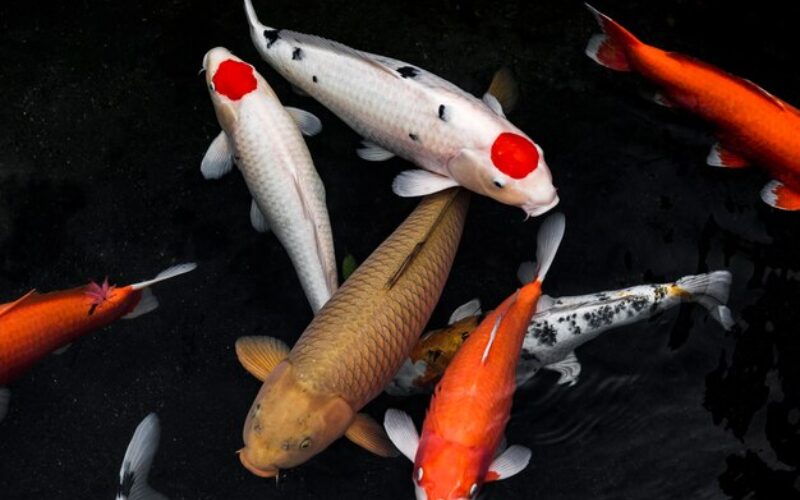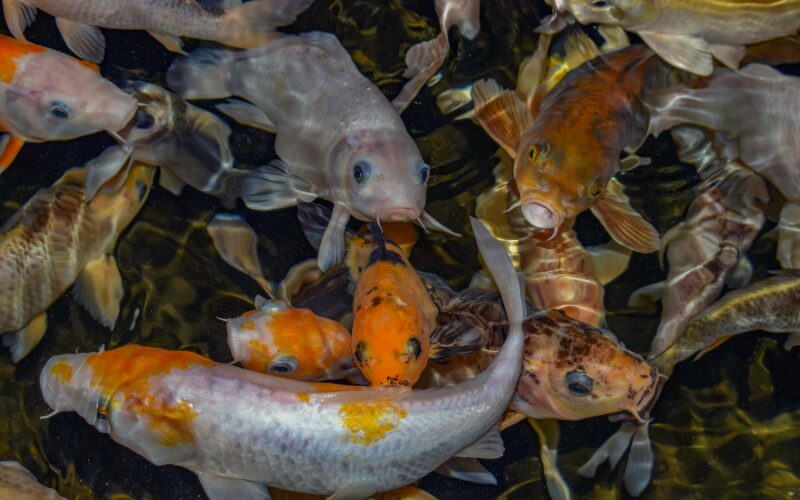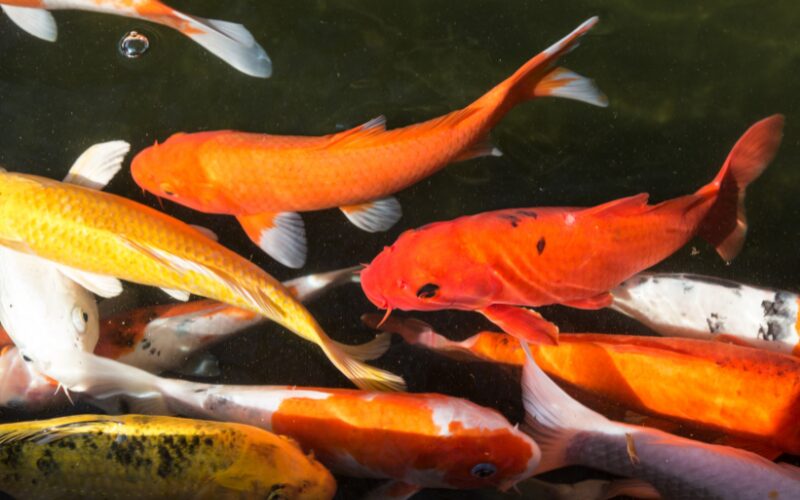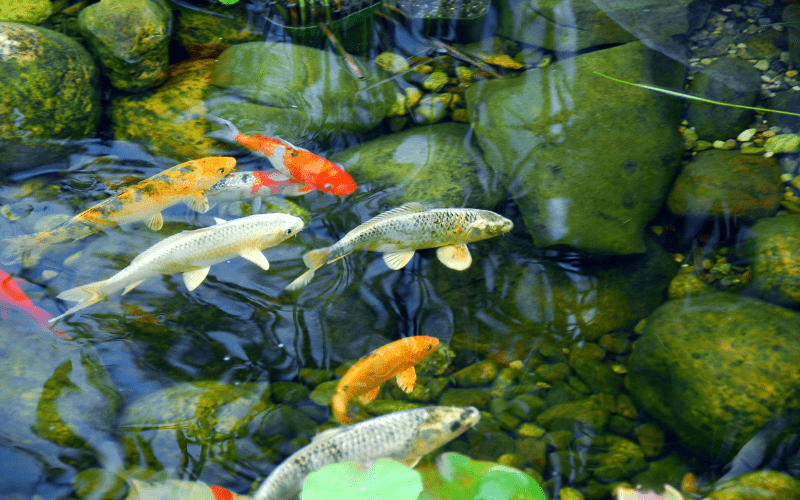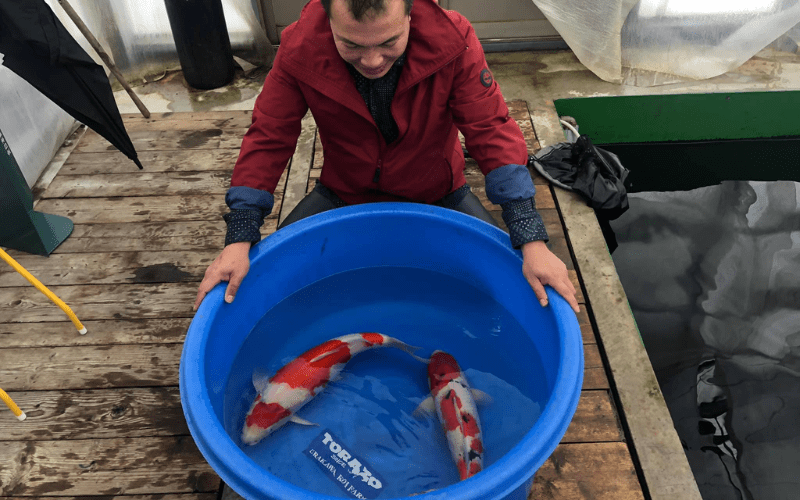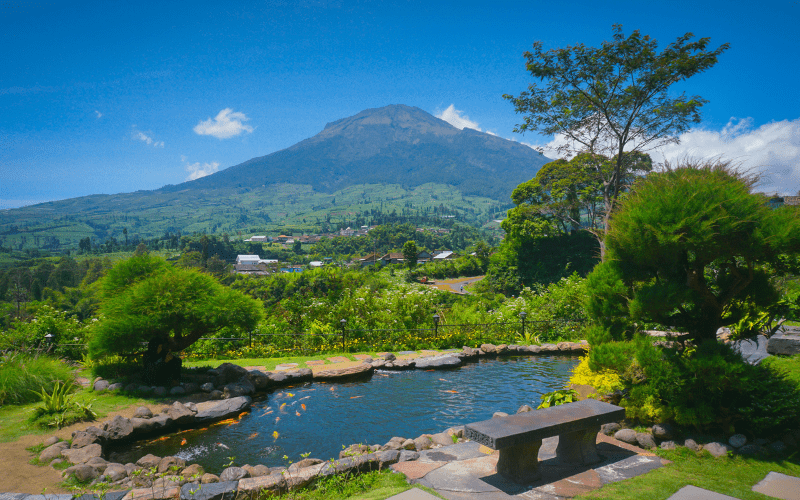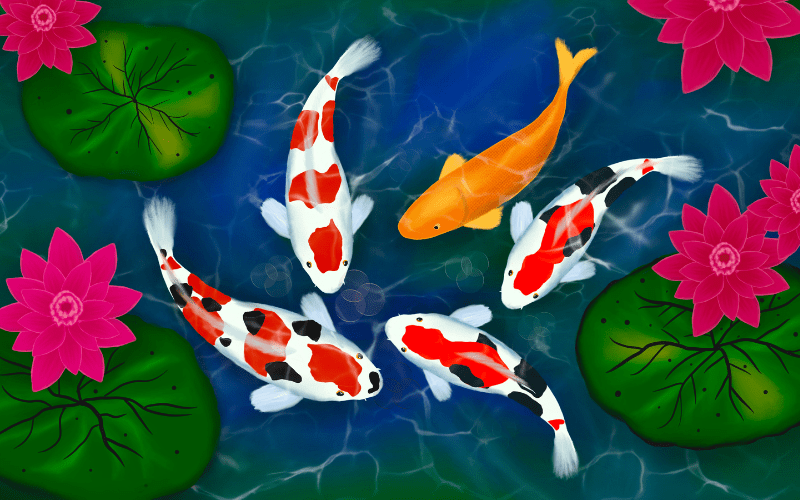Asagi Koi is one of the most beloved and iconic varieties in the world of koi keeping. Known for its unique blue and red coloration, Asagi Koi is not just a stunning addition to any pond but also represents a piece of koi history. Caring for these beautiful fish requires a good understanding of their specific needs. This blog post will guide you through essential tips for maintaining a healthy and vibrant Asagi Koi in your pond, ensuring that they thrive for years to come.
Understanding Asagi Koi Fish
History and Origins
Asagi Koi are among the oldest and most traditional koi varieties, with their origins tracing back to Japan. The word “Asagi” translates to “light blue,” which reflects the distinct bluish scales that cover their bodies. Over centuries, careful breeding has led to the Asagi Koi we know today, characterized by their beautiful blue and red patterns. These fish hold a special place in the koi history, often regarded as the foundation for many other koi varieties.
Physical Characteristics
Asagi Koi are easily recognizable by their pale blue or indigo reticulated scales that cover the entire body, along with red or orange markings that typically appear on the fins, belly, and sometimes the gill plates. They can grow quite large, with some reaching up to 28 inches in length, depending on the pond environment and the care they receive. The contrast between the blue and red colors makes Asagi Koi a standout choice for koi enthusiasts.
Ideal Pond Environment for Asagi Koi
Water Quality Requirements
Maintaining pristine water quality is crucial for the health and coloration of your Asagi Koi. The ideal pH level for Asagi Koi is between 6.5 and 8.0, and it’s essential to ensure that ammonia and nitrite levels remain at zero. Regular water testing and frequent water changes are necessary to keep the water parameters stable. At Torii Koi And Pond, we offer a range of water treatment products to help you maintain the best water quality for your Asagi Koi.
Pond Size and Depth
Asagi Koi requires a spacious pond to thrive. A minimum of 1,000 gallons is recommended, with a depth of at least 3 feet to help regulate the temperature and provide enough space for the fish to grow. A deeper pond will also protect the koi during temperature fluctuations, particularly in the hot summer months and cold winter seasons.
Filtration and Aeration
A high-quality filtration system is essential for keeping the water clean and free from harmful substances. Proper aeration is also important as it ensures that the water is well-oxygenated, which is vital for the health of your Asagi Koi. At Torii Koi And Pond, we offer advanced filtration systems designed specifically for koi ponds, ensuring that your fish live in a healthy and stable environment.
Feeding Your Asagi Koi Fish
Dietary Needs
Asagi Koi have specific dietary needs to maintain their vibrant colors and overall health. A balanced diet rich in proteins, vitamins, and minerals is essential. We recommend feeding your Asagi Koi high-quality koi pellets that are formulated to enhance their coloration. Additionally, you can supplement their diet with fresh fruits, vegetables, and occasional treats like shrimp or worms to add variety and ensure they receive all necessary nutrients.
Feeding Schedule
It’s important to establish a consistent feeding schedule for your Asagi Koi. During the warmer months, when the water temperature is between 60°F and 75°F, feed your koi 2-3 times a day with enough food that they can consume within 5 minutes. As the temperature drops, reduce the feeding frequency, and switch to a wheat germ-based food, which is easier for the koi to digest in colder temperatures.
Supplemental Feeding
For those looking to enhance the color of their Asagi Koi, consider adding color-enhancing supplements to their diet. These supplements, often rich in carotenoids, can help bring out the red and orange hues on your koi. At Torii Koi And Pond, we offer a selection of color-enhancing foods and supplements specifically formulated for koi fish.
Health and Disease Prevention
Common Health Issues in Asagi Koi
Like all koi varieties, Asagi Koi are susceptible to certain health issues, including parasitic infections, bacterial infections, and stress-related conditions. Common signs of illness include lethargy, loss of appetite, abnormal swimming patterns, and visible sores or lesions. Early detection is key to successful treatment, so monitoring your koi regularly is important.
Preventive Measures
Preventing disease in your Asagi Koi starts with maintaining optimal water quality and providing a stress-free environment. Regular health checks, including inspecting your koi for any signs of illness and observing their behavior, are crucial. Quarantining new fish before introducing them to the main pond is also essential to prevent the spread of diseases.
Treatment Options
If your Asagi Koi does become ill, it’s important to act quickly. There are various treatment options available depending on the illness, ranging from medicated foods to water treatments. At Torii Koi And Pond, we provide a range of koi medications and health products to help you treat common ailments effectively.
Seasonal Care for Asagi Koi
Spring Care
Spring is a critical time for your Asagi Koi as they come out of winter hibernation. Begin by gradually increasing feeding as the water temperature rises, and perform a thorough pond clean to remove any debris or waste accumulated over the winter.
Summer Care
During the summer months, monitor your pond’s water temperature closely. High temperatures can reduce oxygen levels, so ensure your pond is well-aerated. Providing shade and adding aquatic plants can help keep the water temperature down and protect your koi from the harsh sun.
Fall Care
As temperatures begin to drop, prepare your Asagi Koi for winter by gradually reducing feeding and switching to a wheat germ-based diet. Clean the pond and check your filtration system to ensure everything is in good working order before the winter months.
Winter Care
During winter, your Asagi Koi will enter a state of semi-hibernation. It’s important to maintain a hole in the ice if your pond freezes over, to allow harmful gases to escape and oxygen to enter the water. Avoid feeding your koi when the water temperature is below 50°F.
Enhancing the Beauty of Your Asagi Koi
Color Enhancement Tips
To enhance the beautiful colors of your Asagi Koi, focus on providing a high-quality diet rich in carotenoids and other color-enhancing nutrients. Sunlight also plays a crucial role in color development, so ensure your koi have access to natural light. At Torii Koi And Pond, we offer premium koi food that supports vibrant color development.
Breeding Asagi Koi
Breeding Asagi Koi can be a rewarding experience. Select the healthiest and most vibrant fish for breeding, and ensure they have a stress-free environment to spawn. After the eggs are laid, separate them from the adult fish to protect them until they hatch.
Showing Asagi Koi
If you’re interested in showcasing your Asagi Koi at competitions, proper preparation is key. Focus on maintaining excellent water quality and a balanced diet to keep your koi in peak condition. Torii Koi And Pond can provide you with all the supplies you need to prepare your koi for competition.
FAQs
- How often should I feed my Asagi Koi?
- Feed your Asagi Koi 2-3 times daily during warmer months, and reduce feeding as temperatures drop.
- What should I do if my Asagi Koi develops a disease?
- Act quickly by identifying the disease and using appropriate treatments. Torii Koi And Pond offers a range of medications to help you treat common koi diseases.
- How can I enhance the color of my Asagi Koi?
- Use color-enhancing foods and supplements, provide adequate sunlight, and maintain high water quality.
- What is the ideal pond size for keeping Asagi Koi?
- A minimum of 1,000 gallons with a depth of at least 3 feet is recommended for Asagi Koi.
- How do I prepare my Asagi Koi for winter?
- Gradually reduce feeding, clean the pond, and ensure proper aeration during the winter months.
Key Points
- Asagi Koi are a traditional and iconic variety of koi, known for their unique blue and red coloration.
- Maintaining excellent water quality, a spacious pond, and proper filtration is crucial for the health of Asagi Koi.
- A balanced diet and consistent feeding schedule are essential for keeping your Asagi Koi healthy and vibrant.
- Regular health checks and preventive measures help avoid common diseases in Asagi Koi.
- Seasonal care, including adjustments in feeding and pond maintenance, ensures the well-being of Asagi Koi throughout the year.
- Enhancing the color and beauty of your Asagi Koi can be achieved through diet, sunlight, and proper care.
At Torii Koi And Pond, we are committed to providing you with the best products and advice to care for your Asagi Koi. Whether you’re looking for high-quality koi food, filtration systems, or medications, we have everything you need to keep your koi healthy and beautiful.

